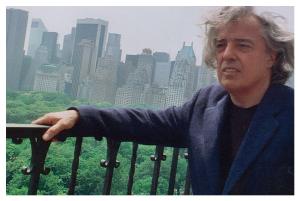Image: YouTube
If you’ve seen any of the looks from the New York City Met Gala this year, it was probably Beyonce’s Givenchy Haute Couture dress, Gigi Hadid in Tommy Hilfiger (accompanied by boyfriend Zayn Malik with a silver-plated arm), or Emma Watson in Calvin Klein. Otherwise, your timelines might have been filled with pictures of Clare Danes’ incredible light-up Cinderella dress by Zac Posen. It’s this dress that gives the biggest hint towards this year’s gala theme, Manus x Machina, which saw hand- and machine-made designs join forces in some of the most innovative couture of recent years.
The gala is the fundraising event for the Metropolitan Museum of Art’s Costume Institute in New York City. This year, the Institute chose the theme of Manus x Machina to explore the way designers combine manmade and machine-made materials and designs to create haute couture and avant-garde ready-to-wear. The theme allowed for a unique take on a section of the industry that traditionally uses manual methods to create beautiful, intricately-detailed pieces that are as much works of art as they are fashion pieces. The ‘machine-made’ was a tribute to the extent to which machinery plays a part in society, and increasingly in art, and a challenge to conventional haute couture. The machine by no means takes away from the hand-made garments of tradition: rather, the meticulous design and planning that goes into each mechanic piece is as much a part of the creation of haute couture as any hand-stitched process.
So, how did the designers incorporate the machine into their work? Clare Danes’ dress is perhaps the most obvious example, with LED lights and 30 mini battery packs sewn into the lining of the dress, which was made from a hollow shell of custom-made Gossamer fabric to prevent the dress from becoming too heavy. Posen combined the most fundamental elements of modern technology – electricity and light – to bring a traditional fairy-tale Cinderella dress into the twenty-first century without altering its classical delicacy. Elsewhere, Marchesa designers and co-founders Georgina Chapman and Keren Craig worked with IBM’s cognitive computing system Watson to design a ‘cognitive dress’, worn by model Karolina Kurkova, that changed colour depending on the reaction it gained on social media – a reflection on the emotion and passion hidden behind the technological wall of social media.
Emma Watson’s dress by Calvin Klein and Eco Age was as much about contemporary issues as it was technology. Made from recycled plastic bottles, her look was a demonstration of the crossover between fashion and environmental sustainability – not the most fashionable of phrases – thanks to technology. In a Facebook post, Watson wrote: ‘Plastic is one of the biggest pollutants on the planet. Being able to repurpose this waste and incorporate it into my gown for the #MetGala proves the power that creativity, technology and fashion can have by working together.’ The look may not have the visual effect that Clare Danes’ dress did, but its concept was arguably one of the most innovative of the collection – and has valuable practical resonances, too.
Looking further into the Met’s collection – there are plenty of photographs of select pieces online – it’s the use of plastic that stands out. But moving away from the recyclable to the more literally technological, 3D printing was also a major theme. In a video shot by CNN Style for the event, Andrew Bolton, Curator in Charge at the Costume Institute, explains: ‘3D printing has the potential to be as revolutionary as the sewing machine.’ Iris van Herpen was at the forefront of this experimental design technique, as with her museum show, ‘Transforming Fashion’, that debuted in Atlanta’s High Museum of Art from November through to May this year. The bone-like structures and intricate designs that result from the combination of such a technological innovation with fashion is an accolade to the ability of fashion to transform and be transformed by technology in turn.
This year’s Met Gala was not merely a collection of metallic, futuristic visual pieces. The thought and innovation that went behind the designs paid homage to the collective awareness of technology as a dominant force in our society – and what better way to do so than by weaving it into fashion? The gala also demonstrated the willingness of designers to engage with social and global issues outside the realms of ‘traditional’ fashion. Fashion can thus never be labelled as shallow when it is willing to address the need for sustainability, or draw attention to the effect of social media on our own psychology. As Apple’s Chief Design Officer Jony Ive explained, ‘technology and craft are not at odds, and much like beauty and utility, they go hand in hand. Often the result is more powerful for the combination.’
Originally published on Palatinate Online.

